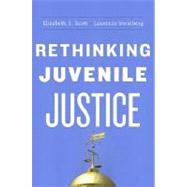
What is included with this book?
| Introduction: The Challenge of Lionel Tate | p. 1 |
| The Science of Adolescent Development and Teenagers' Involvement in Crime | p. 28 |
| Regulating Children in American Law: The State as Parent and Protector | p. 61 |
| Why Crime Is Different | p. 82 |
| Immaturity and Mitigation | p. 118 |
| Developmental Competence and the Adjudication of Juveniles | p. 149 |
| Social Welfare and Juvenile Crime Regulation | p. 181 |
| The Developmental Model and Juvenile Justice Policy for the Twenty-First Century | p. 223 |
| Is Society Ready for Juvenile Justice Reform? | p. 265 |
| Notes | p. 285 |
| Acknowledgments | p. 355 |
| Index | p. 359 |
| Table of Contents provided by Ingram. All Rights Reserved. |
The New copy of this book will include any supplemental materials advertised. Please check the title of the book to determine if it should include any access cards, study guides, lab manuals, CDs, etc.
The Used, Rental and eBook copies of this book are not guaranteed to include any supplemental materials. Typically, only the book itself is included. This is true even if the title states it includes any access cards, study guides, lab manuals, CDs, etc.